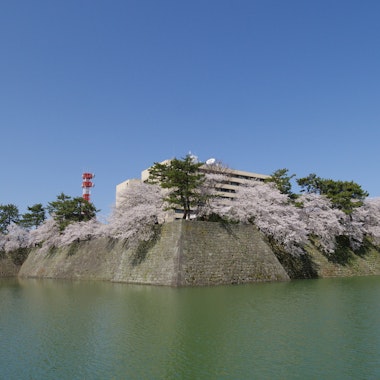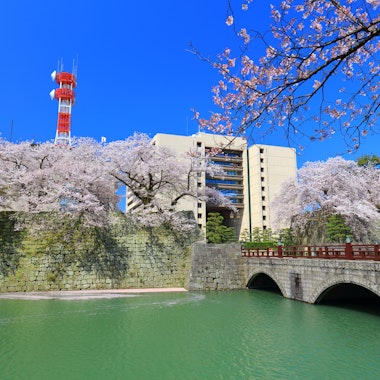


Fukui Castle Ruins stand in the heart of Fukui City as a testament to the region's feudal past, though little remains of the original structure today. Built in 1606 by Yūki Hideyasu, the first lord of the Fukui Domain and the second son of Tokugawa Ieyasu, the castle served as the seat of the Matsudaira clan for over 260 years until the Meiji Restoration. The castle was dismantled in 1871 following the abolition of the feudal domain system, and most structures were lost to fires and modernization.
The site holds significant historical importance as the administrative center of the powerful Fukui Domain, which controlled much of the Echizen region. Today, the ruins are integrated into the modern cityscape, with the Fukui Prefectural Office and other government buildings occupying the former castle grounds. The original stone walls and moat remain visible, offering a glimpse into the castle's past grandeur. The site also features a reconstruction of the Tatsumi Yagura (southeast turret) and several stone monuments marking historical points of interest.
Visitors can walk freely around the perimeter to view the well-preserved stone fortifications and photograph the moat, which still encircles portions of the government complex. The Hon-maru (main bailey) area is accessible, though it now functions as the prefectural administrative district. Informational plaques in Japanese provide historical context at various points along the walls. The adjacent Fukui Castle Site Park offers a pleasant green space for relaxation.
The castle ruins are located in central Fukui City, approximately 10 minutes on foot from JR Fukui Station. The site is easily accessible by walking north along the main roads from the station. There is no admission fee as the ruins are part of the open public space surrounding the government buildings. Parking is limited, but several paid parking lots operate in the nearby downtown area. The location's central position makes it convenient to combine with visits to other city attractions.